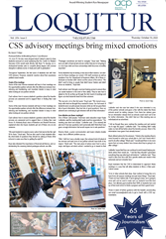Global warming at the Icebox, an exhibit of various artists dedicated to bringing attention to the world’s global warming crisis, will be on display at the Crane Arts Building until Nov. 15.
Located in Philadelphia, this exhibit drew attention from artists throughout the world. Twenty-five people were selected.
The creations these artists designed were anything but conventional.
Materials used to make these pieces ranged from drawings to ice skates; nothing was too out of the ordinary for this showing.
This was a show filled with alternative ways to help prevent global warming. Although there was only one theme, there were many mediums within the show.
Andrew Chartier’s work, the Dioxigrapher, stemmed from a golf cart, bicycle wheel, metal parts, electronic components and batteries. Chartier’s more experimental approach to help diminish global warming was shown on a video next to where his work was displayed.
In the video, Chartier explains how his creation works. By placing the nose of the Dioxigrapher at the tail pipe for about a minute, Chartier is able to determine how much carbon emission one car is setting off.
After the Dioxigrapher processes the information, it records its findings on the pavement. Each element of pollution is represented by different colored pieces of children’s sidewalk chalk that show the detected chemicals. After spinning around a few times, the information is computed and the colored chalk makes contact with the ground to show its findings.
Pasture, a piece constructed by Gerald Beaulieu, took the more visually interesting approach. In Beaulieu’s biography he talks about “a principle concern: our next meal.” Made from Plexiglas tables, 256 test tubes filled with a variety of materials and cereal stalks, this color work of art was eye catching.
Beaulieu wanted to convey through Pasture the importance of agriculture. What we eat and where we get it from are vital to living a healthy life. Our country’s food production will suffer because of global warming and soon the things we put in our body can become hazardous. Beaulieu thinks of agriculture as “our most successful venture in domesticating nature,” as stated in his biography.
Of all the pieces of work in the Ice Box gallery, Beaulieu’s stuck out not because of it’s beginning product, but because of the goal he had for the end of his piece. The stalks placed in the test tubes over time will be able to provide commercial cereals as the final product.
Ben Pinder created Return to Symzonia from video, drawings, wood, canvas, paper mache,
found objects and handmade books. Among one of the largest pieces displayed in the gallery, Pinder wanted to convey a fantasy of what the world would be like if we were all forced to live in Antarctica.
A polar bear with a sleigh on its back capable of carting people around was the main focus of Pinder’s display.
He also showed hand-drawn maps of what the country would now look like. Pinder colonized the Arctic through his design. The inspiration was derived from America’s dangerous global warming state.


